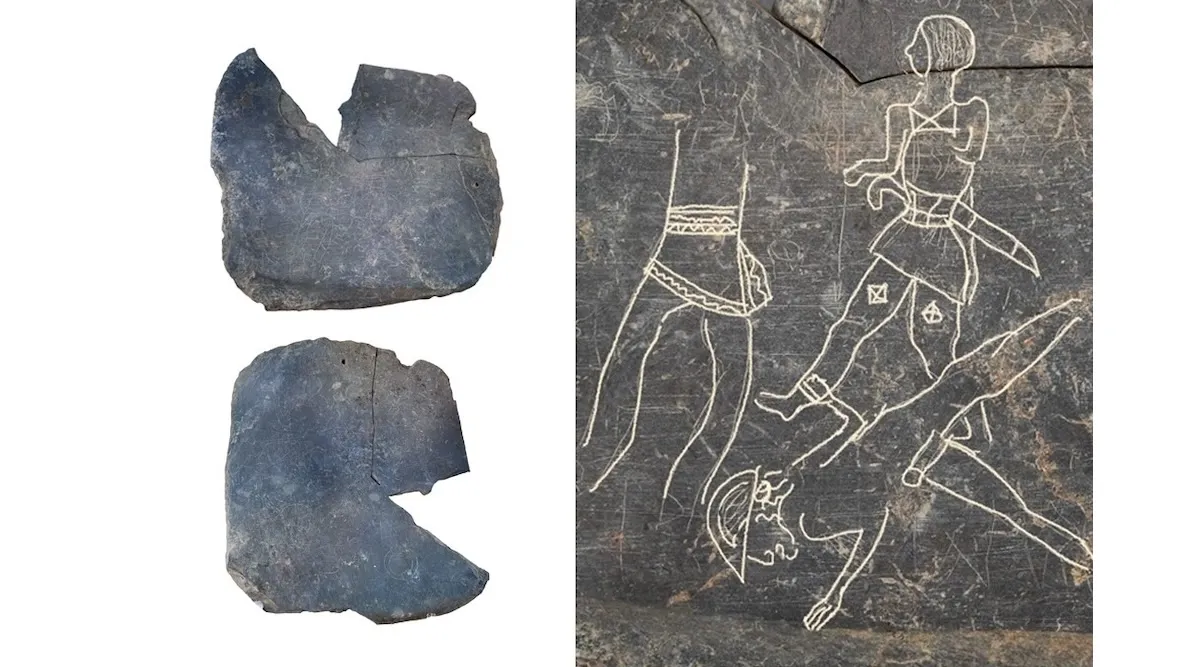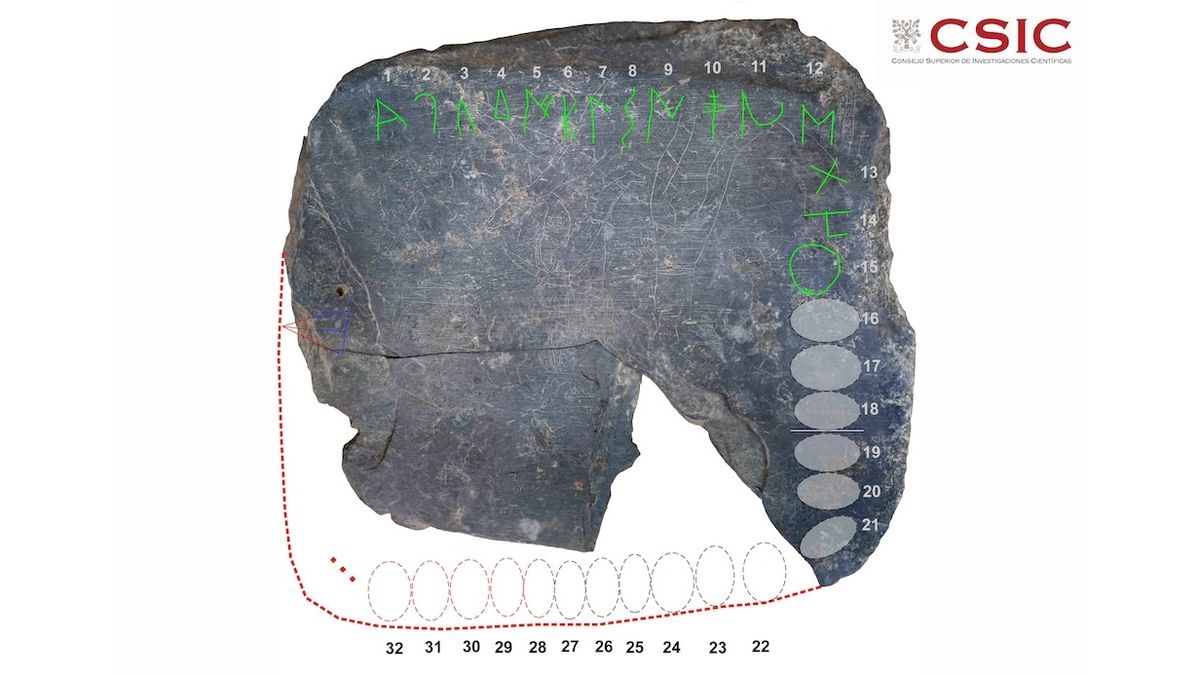2,500-year-old slate containing drawings of battle scenes and paleo-alphabet discovered in Spain
Archaeologists in Spain have discovered a unique tablet containing ancient drawings that depict Tartessian battle scenes and an alphabet.
The artworks were found during ongoing excavations at Casas del Turuñuelo, an ancient Tartessian site in southwestern Spain, according to a translated
statement.
The Tartessos people were an ancient civilization that first settled in the Iberian peninsula around the eighth century B.C. and were known for their elaborate writing system. By the fourth century B.C., they mysteriously vanished.
On the slate's permitter, someone had carved an alphabetical "sequence of 21 signs" in Paleo-Hispanic script, according to a different translated
statement. Unfortunately, a piece of the slate was broken off, so researchers can only speculate as to which letters are missing from the series.
One side of the tablet contained letters from an alphabet. (Image credit: JFiJ/CSIC)
"At least [six] signs would have been lost in the split area of the piece, but if it were completely symmetrical and the signs completely occupied three of the four sides of the plate, it could reach 32 signs,"
Joan Ferrer i Jané, a researcher in paleohispanic philology (the study of language structure and development) at the University of Barcelona, said in the statement. "It is a shame that the final part of the alphabet has been lost since … that is where the most pronounced differences tend to be."
The plaque, which measures nearly 8 inches (20 centimeters) long, also contains engravings depicting three warriors in battle.
https://www.livescience.com/archaeo...scenes-and-paleo-alphabet-discovered-in-spain
maximus otter



